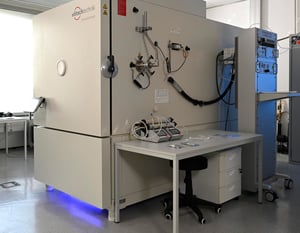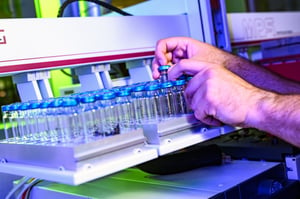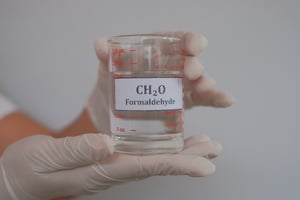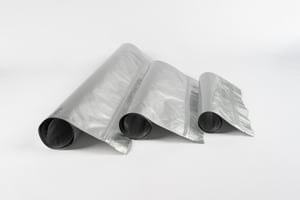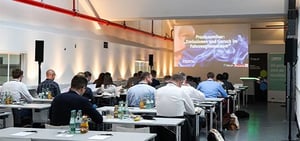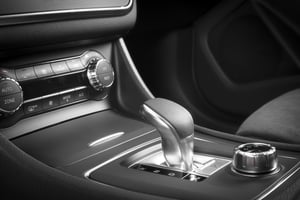
Fogging
Determination of the fogging behavior of materials used in vehicle interiors
FOGGING TEST IN THE
AUTOMOBILE INTERIOR
HARMONY FOR SENSES AND COMFORT
The demands placed on modern vehicles have long since gone beyond technology and functionality. One decisive aspect that has a major impact on customer satisfaction is the feeling that a vehicle conveys - both in terms of touch and comfort during use. Customers expect a sophisticated interplay of aesthetics, haptics and comfort, especially in the interior of a vehicle. These aspects are becoming increasingly important not only for premium manufacturers, but also in the broad market segment.
Haptics and comfort evaluation has established itself as a central discipline in order to meet the growing expectations of customers. It combines subjective impressions with objective test criteria to make the quality of materials, textiles and surfaces in vehicles measurable. The aim is to create an interior experience that is visually, tactilely and functionally convincing - be it for the seats, armrests or other surfaces that are regularly touched in the vehicle.
With a clearly structured approach and state-of-the-art testing methods, we help manufacturers and suppliers make informed decisions. Our tests provide crucial insights into how materials are perceived and experienced, setting standards in an industry where quality and innovation go hand in hand.
- Visual inspection
- Tactile tests
- Comfort analyses
- Long-term usage tests
Visual inspection
First impressions are important. The appearance of the materials is examined for color, pattern and workmanship.
Tactile tests
Comfort analyses
Long-term usage tests

We rely on comprehensive evaluation methods for textile testing:
-
Visual inspection
-
Tactile tests
-
Comfort analyses
-
Long-term use tests
Fogging test methods
- DIN 75201-A (reflectrometric)
- DIN 75201-B (gravimetric)
- PV 3015 (Volkswagen)
- GMW 3235-A (General Motors Worldwide)
- PSA D45 1727
- and much more.
Are you looking for an exam? Standard? Specifications?
Accredited & certified tests
CONTACT OUR EXPERTS
Description. Lorem ipsum dolor sit amet, consetetur sadipscing elitr, sed diam nonumy eirmod tempor invidunt ut labore et
- Tab Title






Frequently asked questions about the fogging test
The sample quantities required for a fogging test depend on the standard and the test method used. Here are the general guidelines:
1. standard DIN 75201 (type A and type B)
-
Type A (glass plate method):
A sample quantity of 10 cm² is typically required. The sample is placed on a heated plate in a sealed chamber and the volatiles released condense on a glass plate above. -
Type B (aluminum foil method):
Similar to type A, a sample volume of approximately 10 cm² is used. However, the volatile substances condense on a cooled aluminum foil.
2. standard ISO 6452 (international standard)
- Sample quantity:
Again, a sample size of about 10 cm² is typically required to evaluate the amount of volatiles released at elevated temperature.
3. other specific requirements
Depending on the specific requirements of the customer or OEM standards, sample quantities may vary. It is important to check the respective standards or test requirements carefully.
Method A - Reflectometric method:
- Principle: This method measures the change in reflectivity on a glass plate on which volatile components from the material sample are deposited.
- Procedure: A material sample is heated in a beaker while a glass plate above it is cooled to 21°C. The temperature difference causes the volatile components to condense on the glass plate. The reflectance index of the fogged glass plate is then measured to determine the amount of condensed material.
- Application: This method is particularly suitable for materials for which an exact determination of the optical fog effect is required.
Method B - Gravimetric method:
- Principle: This method measures the weight of condensed volatiles on an aluminum foil.
- Procedure: The material sample is heated in a beaker while an aluminum foil disc is cooled to 21°C. After 16 hours, the amount of condensed material on the foil is weighed.
- Application: This method is ideal for an accurate quantitative determination of the amount of condensed volatiles.
EMISSIONS & ODOR
Formaldehyd in Fahrzeugen: Herausforderungen für die Automobilindustrie
Read moreStellantis: Freigabe für Emissionsprüfungen erfolgreich (VIAQ)
Read moreVDA 277 vs. VDA 278: Was ist der Unterschied?
Read moreGeruchsunterschiede bei Polypropylen: Die Rolle von Faserverstärkung und Verarbeitungsparametern
Read moreWarum sind die Einheiten der Ergebnisse von Prüfungen der Werkstoffemissionen eigentlich so unterschiedlich?
Read moreGrenzwerte für Formaldehyd und Formaldehydabspaltern in Fahrzeugen
Read moreFREQUENTLY ASKED QUESTIONS ABOUT HAPTICS AND COMFORT RATINGS
- Visual inspection
- Tactile tests
- Comfort analyses
- Long-term use tests


